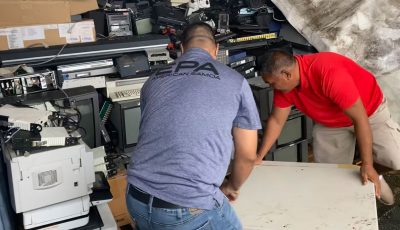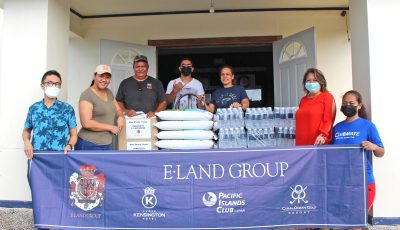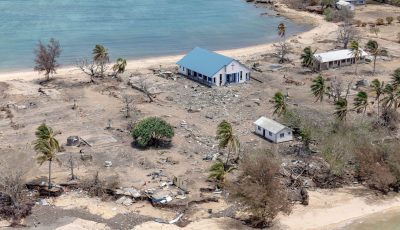Strategy to build Pacific regional geospatial capacity is endorsed
SUVA, Fiji—Pacific Island lands survey and geospatial experts convened this week at the 3rd Pacific Geospatial and Surveying Council meeting to finalize and endorse a 10-year regional strategy aimed at advancing geospatial and surveying services in the region.
The Pacific Geospatial and Surveying Strategy highlights the critical importance of accurate geospatial information to Pacific Island economies and provides a roadmap for building the geospatial capacity of national governments to meet these growing needs.
“This strategy will be the PGSC’s guide toward achieving our vision of sustainable development in the Pacific enabled by world-class geospatial information and surveying services,” said PGSC chairman and Tuvalu director of Lands and Survey Faatasi Malologa.
“The transition to modernize and upgrade the standards of surveying and geospatial technology in the Pacific region is critical to support better decision making in matters of land and marine management, in particular the monitoring and analysis of the impacts of climate change in near-real time for adaptation and mitigation purposes.”
Along with Malologa, First Secretary of the Australian High Commission in Suva Raymond Bojczuk opened the meeting, which was organized by the Secretariat of the Pacific Community under the Australian-funded Climate and Oceans Support Program in the Pacific.
“Australia is proud to support this important milestone in Pacific development,” said Bojczuk. “The services provided by Pacific geospatial scientists and surveyors support a multitude of industries and sectors and contributes significantly to the security and wellbeing of Pacific people.”
While the region has been challenged to build and retain capacity in terms of qualified staff, technical infrastructure, software and equipment, updated legislative frameworks, and funding resources, there has been significant progress over time.
Development initiatives including, but not limited to, Tonga, Samoa and Fiji’s commitments to update their local positioning systems to the global standard, Nauru and Tuvalu’s National Geodetic Surveys, the Pacific Maritime Boundaries Project, the Pacific Sea Level Monitoring Project, the Pacific Regional Navigational Initiative, and the PACGEO online geospatial database (http://www.pacgeo.org/) have already begun to build the geospatial and surveying capacity of Pacific Island governments.
“The growing number of initiatives in recent years and the development of this strategy are signs of a strong regional voice for geospatial and survey professionals,” said professor Michael Petterson, director of the SPC Geoscience Division. “Geospatial and geodetic knowledge is of enormous importance to the Pacific Islands countries especially bearing in mind the relationship between rising sea levels and islands that may rise or subside due to geotectonic forces. It is important to have a thorough understanding of all these dynamics when considering climate change adaptation.”
Current PGSC members include: Cook Islands, Fiji, Federated States of Micronesia, Kiribati, Marshall Islands, Nauru, Niue, Palau, Papua New Guinea, Samoa, Solomon Islands, Tonga, Tuvalu, and Vanuatu. (SPC)



























